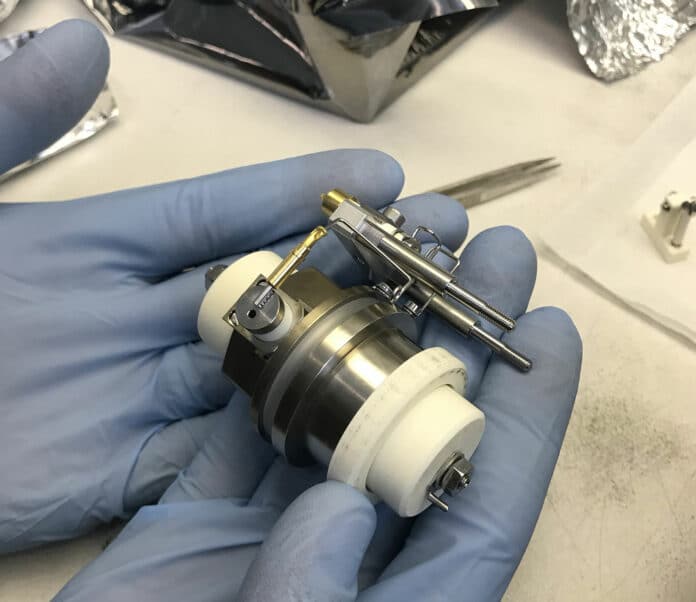Over time, the space missions we are witnessing become increasingly ambitious, reaching the most remote areas of the Solar System. Because of this, the need for more compact, resource-conserving, and accurate analytical tools are constantly increasing, especially when searching for life forms on habitable planets or their satellites.
A University of Maryland-led team has managed to develop a new, small device suited to the needs of NASA space missions. Weighing only about 17 pounds (7 kg), this mini laser-sourced analyzer is significantly smaller and more resource efficient than its predecessors. Despite its small size, it is perfectly capable of analyzing samples of planetary material and the potential biological trace onsite.
The laser device is a scaled-down combination of two important tools for detecting signs of life and identifying compositions of materials. The new system is made up of laser desorption mass spectrometry (LDMS) technology that removes small amounts of material from a planetary sample and an Orbitrap analyzer that delivers high-resolution data about the chemistry of the examined materials.
“The Orbitrap was originally built for commercial use,” explained Ricardo Arevalo, lead author of the paper and an associate professor of geology at UMD. “You can find them in the labs of pharmaceutical, medical and proteomic industries. The one in my own lab is just under 400 pounds, so they’re quite large, and it took us eight years to make a prototype that could be used efficiently in space – significantly smaller and less resource-intensive but still capable of cutting-edge science.”
The new device boasts the same benefits as its larger predecessors but is streamlined for space exploration and onsite planetary material analysis, according to the researchers. Thanks to its small size, and the low power required, the mini Orbitrap LDMS instrument can be easily stowed away and maintained on space mission payloads.
It can be easily incorporated, and its maintenance is simple. The instrument’s analyzes of a planetary surface are also far less intrusive and, therefore, less likely to contaminate or damage a sample than other methods that attempt to identify unknown compounds. The big advantage of a laser source, the authors explain, is that anything that can be ionized can be analyzed.
The mini LDMS Orbitrap laser will also give researchers access to larger and more complex compounds that are most likely to be associated with biology. Smaller compounds, like amino acids, are much more ambiguous signatures of life forms. After all, they can be produced abiotically, meaning that they’re not necessarily proof of life.
“We know now that larger and more complex molecules, like proteins, are more likely to have been created by or associated with living systems,” Arevalo said. “The laser lets us study larger and more complex organics that can reflect higher fidelity biosignatures than smaller, simpler compounds.”
In the next few years, researchers hope to use the technology in real-time space ventures, specifically into the outer solar system, such as missions focused on life detection objectives. They also hope to use the tech in moon explorations.
“I view this prototype as a pathfinder for other future LDMS and Orbitrap-based instruments,” Arevalo said. “Our mini Orbitrap LDMS instrument has the potential to significantly enhance the way we currently study the geochemistry or astrobiology of a planetary surface.”
Journal reference:
- Ricardo Arevalo Jr, Lori Willhite, Anais Bardyn, Ziqin Ni, Soumya Ray, Adrian Southard, Ryan Danell, Andrej Grubisic, Cynthia Gundersen, Niko Minasola, Anthony Yu, Molly Fahey, Emanuel Hernandez, Christelle Briois, Laurent Thirkell, Fabrice Colin & Alexander Makarov. Laser desorption mass spectrometry with an Orbitrap analyzer for in situ astrobiology. Nature Astronomy, 2023; DOI: 10.1038/s41550-022-01866-x
